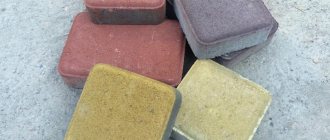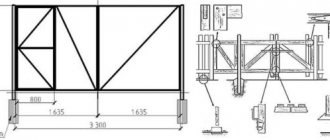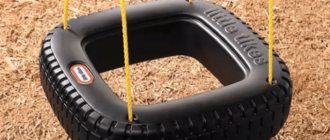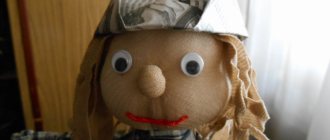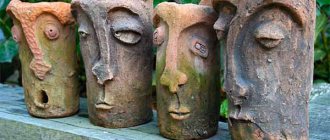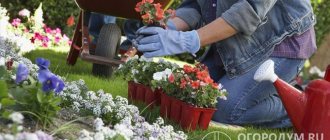Decorative concrete refers to building materials of artificial origin. Unlike ordinary concrete, which consists mainly of a sand-cement mixture, various fractions of gravel and water, decorative concrete includes additives, various types of fillers, and coloring pigments. Instead of ordinary cement, the composition includes Portland cement made from fine powder, obtained by grinding clay and limestone after treating them at high temperatures.
Decorative concrete is very popular in many countries. On its surface you can create an imitation of paving stones, cobblestones, wood, decorative tiles, bricks, and any natural stone. It looks very beautiful, and is much cheaper than covering surfaces with tiles, granite, and marble.
What is art concrete
Art concrete is a plastic, durable and easy-to-work material that is used where ordinary concrete will not allow the task to be completed. Archstone resembles plasticine, so you can use it to create a variety of decorative elements, complex shapes for decorating construction sites and sites - figures, stucco molding, statues, columns, openwork latticework, park sculptures, etc.
When asking questions about whether architectural concrete is relevant when performing specific work, what it is and how to make it, you can briefly explain it this way: it is ordinary concrete with various admixtures that provide useful characteristics of the material: increase durability, add color, texture, etc. d.
Artistic concrete is produced from a sand-cement mixture, adding various additives to regulate decorative properties and technological parameters - pigment to achieve the desired color, level of strength, ductility, resistance to temperature changes and moisture, hardening time, etc.
Main components of the material:
- Water
- Portland cement
- Quartz sand, marble chips (coarse or fine aggregate)
- Pigment
- Additives to obtain the desired properties (modifying, reinforcing)
In appearance, the material is similar to natural wild stone; it allows you to beautifully design buildings and territories, significantly saving on decorative finishing. Like other types of concrete, archstone is standardized by state standards: GOST 26633-2015, GOST 25192-2012. Plastering and finishing composition can be purchased in specialized stores or made independently according to a recipe.
Characteristics and composition of the material
Any art concrete has high strength. On average, it is 39 MPa 3 days after setting and 59 MPa after 28 days. The whiteness of the finished composition varies between 68-85%, the minimum frost resistance is 100 cycles of freezing and thawing. Art concrete sets quickly and gains strength after 15 hours.
The basic composition of the material is not fundamentally different from classical solutions. Art concrete includes a binder component - Portland cement of white, light gray color M400 or M500 strictly without foreign inclusions and lumps. M600 and M700 cements are used much less frequently for the production of mixtures. The composition also includes quartz sand, which can be partially (up to 5-10%) replaced with granite, marble chips or glass powder.
In addition, art concrete may include other ingredients:
- fine-grained crushed stone, pebbles, shells of a certain shade (to add decorativeness);
- plasticizers, curing regulators, additives to enhance frost resistance, water repellents;
- fiberglass or other reinforcing fibers.
Pigments can be added to the mixture so that it immediately acquires the desired color. Also, purified water in a certain amount is used to prepare the material. In addition to the main binder (cement), art concrete may also include other components with similar properties:
- Acrylic (acrylic resin). The finished material dries quickly, has high elasticity, is easier to tint, and is suitable for rooms with unstable humidity and temperature. The service life of art concrete increases to 10-15 years.
- Minerals - clay, lime, gypsum. They make the composition more decorative, increase abrasion resistance, and provide fire safety.
- Silicates. Provide the highest resistance to damage and chemicals, and repel water. They are used if art concrete is intended for outdoor use.
- Silicone. Gives plasticity, strength, resistance to moisture and ultraviolet radiation.
How is architectural concrete different from ordinary concrete?
The basic composition of both types is the same. As already mentioned in the previous section, these are crushed stone, sand, water, plasticizers.
- To obtain architectural concrete (art concrete), colored pigments are added to the raw material to add color, ceramic chips for texture, or colored glass.
- To ensure that the color is uniform and consistent, special levelers are added.
- More plasticizers are also often included if the material will be created into complex shapes.
Decorative concrete in the interior is part of it; it looks complete and expressive, in harmony with the overall decor.
Compound
Decorative concrete is based on Portland cement with pigments. According to GOST 15825–80, colored Portland cement can have red, yellow, green, blue, pink, brown, and black colors. It should contain 80% clinker, 6% active mineral additives, and up to 15% coloring pigments.
Clay, as a natural pigment, should not exceed 10% of the volume of cement. The amount of other pigments should be below 10%, otherwise their amount will affect the strength and setting time of the decorative composition.
Water plays an important role in the composition of concrete. Its consumption must strictly comply with accepted standards. Any deviation in the direction of decreasing or increasing the amount of water will lead to a change in the color of the mixture. Adding plasticizers to the mixture not only reduces water consumption, but also helps to increase the service life of concrete products.
Uniform coloring is achieved by adding leveling agents and air-entraining additives to the mixture. Fatty lime and finely ground limestone reduce the delamination of concrete. In addition to natural fillers, broken brick, glass, porcelain, tuff seeding, and molten ash waste are added to concrete mixtures.
Types of art concrete
Decorative art concrete is the brainchild of modern times. The building material is made from a basic cement base and additives, dyes and other polymer compounds are added to the composition. Which give the plaster a beautiful appearance and attractive performance characteristics. Therefore, the material belongs to polymer concrete.
Art concrete goes on sale in 2 varieties:
- Microcement. The composition is a polymer-cement mixture. It completely lacks quartz inclusions. It fits perfectly on metal, wood, plastic, ceramic surfaces.
- Microconcrete. A cement-based mixture with the addition of quartz chips, various polymer dyes and additives. The composition is resistant to high temperatures, has good plasticity, does not absorb any odors at all, and is hygroscopic.
According to the type of binding material, art concrete exists in the following variants.
| Acrylic | It is based on acrylic paste. Plastic and universal. The composition dries quickly and is painted in various shades with pigmented paste. It is used in rooms where the humidity is quite high. Tolerates temperature changes well. Easy to clean. Will last at least 10 years. The disadvantages include low vapor permeability and fire hazard. |
| Silicate plaster | The presence of liquid glass at the base places this type of art concrete among high-strength materials. It has a water-repellent surface and is therefore often used for exterior decoration of buildings. Will last 20 years without repair. |
| Mineral | Art concrete is produced in powder form. Consists of: mineral particles, stone and lime chips, clay. The plaster is easy to apply, it can withstand sub-zero temperatures and humidity, has increased abrasion resistance, and is environmentally friendly. The material is breathable and completely non-flammable. Before using mineral art concrete, the surface is coated with a primer. All irregularities must be filled with putty. Will last 10 years. |
| Silicone | It is based on resin components. The durable and flexible coating is quickly applied. Obvious advantages include: durability, easy care, does not fade under the influence of ultraviolet radiation, easily tolerates humidity above normal, and adheres firmly to the base. Contains coloring pigments, antifungal additives, fillers. It is used for finishing the house, both inside and outside. The solution does not need to be mixed; it is sold ready-made. Before application, the wall is treated with a primer. |
Children's room design for a girl
Art concrete on the market is represented mainly by foreign origin. There are also domestic production options. For example, art concrete vgt. Composition including dolomite chips. When applied it gives a rich dark shade.
Decorative concrete art is often confused with architectural concrete. The second is a cement-sand mixture with the addition of plasticizers. Used for the manufacture of architectural delights: stucco molding, statues, flowerpots, and other objects of complex shape.
Concrete furniture
You can make interesting coffee tables with a concrete base or tabletop, minimalist chairs, shelves and TV stands. The furniture will be heavy, but unusual.
For heavy interior items, this could be a kitchen countertop or an island; the material is reliable and durable. For the bathroom, you can make a concrete countertop with a sink.
Application of art concrete
The material is well suited for interior decoration and cladding of exterior objects. It can be applied to walls and various structures or poured into formwork, matrices, obtaining figures of any type.
Application in the interior
Decorative plaster is used to solve the following problems:
- creating a coating without joints, seams on wall panels, columns, ceilings, friezes and other architectural elements in interior decoration;
- decoration of rooms with high humidity using additional protective coating using materials from the brands Cera Decor, Cera di Veneziano, Pastello Vernici;
- special means are used for external decoration of buildings (arches, colonnades, niches, stucco molding and other decorative elements);
- creating a simulated traventine effect.
Facade
With the help of beautiful and unusual bas-reliefs made of art concrete, you can provide building facades with an original appearance. Also, the outer walls are covered with concrete to imitate a stone coating. Columns and arches, as well as various figures for decorating buildings, are cast from this material.
Local area
To decorate a site near a house, the following are often made from arch concrete:
- flowerpots and flower beds for flowers or ornamental shrubs;
- small bridges over streams, finished with concrete;
- sculptures of animals, fairy-tale characters;
- borders, lamps, fountains;
- stones for alpine slides;
- garden tables, benches;
- cubes, pyramids, balls;
- fences, pillars.
Most often, the question of how to make architectural concrete with your own hands worries those owners who want to decorate the territory of the site. You can create unusual figures yourself, but a sculpture or a whole group can also be ordered from workshops.
Photo in the interior of a country house
The interior of a country house has more opportunities for realizing ideas. A simple fireplace with a concrete cladding will look gorgeous. The contrast of cold and hot will look impressive in the interior of the living room.
The photo shows a living room in the interior of a country house. The niche, finished with concrete panels, is fully utilized, combining a fireplace, a seating area and a place for logs.
With the help of concrete columns or small partitions, you can divide the space into zones without compromising the area, without interfering with natural light.
A minimalist staircase with railings is suitable for both classic and modern interiors.
How to make an archstone with your own hands
The creation of architectural products begins with the development of the desired shape. Having decided on what you want to make with your own hands, you can begin to select materials and methods to implement your plans.
Composition and proportions of cement mortar
To make objects, different concrete solutions are prepared. More often they resort to the recipes shown in table.
Art concrete application technology
Before starting work, a ready-made or self-made building mixture is diluted, the necessary pigments and decorative elements are added to it. Then they begin to apply plaster or pour art concrete into the mold.
Surface preparation
The base must be fairly level, dry, and free of dirt. All poorly adhering elements, old paintwork, and falling off plaster must be removed from it. Chips, holes, and cracks are repaired with regular cement mixture. Grease stains are wiped off with a degreaser. The surface is sanded with fine-grain sandpaper, dust is removed with a vacuum cleaner, and then primed with 2 layers.
Procedure for working with art concrete
The first layer of material is applied to the base and leveled with a spatula or trowel. After it dries, a second layer is performed, on which the selected pattern is formed with light movements of any convenient tool. As it partially dries, the edges of the design are smoothed out a little with a trowel.
If necessary, add individual strokes to imitate voids and cavities, cracks in concrete. The coating must dry for at least 15-24 hours at a temperature of about +22 degrees and humidity up to 65-70%. If the art concrete has not been tinted in advance, painting is done by spraying, stamping or painting over stencils.
Shaping products
Art concrete can be poured into any shape. To ensure that there are no voids inside, the material is compacted. Further work with the product is carried out only after it has thoroughly dried (usually after 2 days). To make the surface of the object smooth, it is ground, polished, and uneven surfaces are removed by sandblasting. In addition, the product is molded using the following methods:
- embossing with a relief roller or stamp (panels, bas-reliefs);
- vibration pressing (paving slabs);
- simple pressing (stucco molding, decorative elements).
Manufacturing technology
Filling forms are filled in in the following sequence.
- The molds are lubricated with a release agent. Used motor oil is used here.
- Wipe off excess grease.
- Arch concrete is being prepared.
- Pour it into the mold.
- Place the mold on a vibrating table, where air is removed from the mass.
- Set the filling to dry.
- Release the casting from the mold.
Elastic forms are used in a similar sequence. There is no need for disassembly. The shell is simply removed from the casting.
Sputtering
This method is used to apply paint, which should “turn” concrete into brick, or imitate natural stone. In this case, the acid dye is applied in layers to the uncured solution. The pigment reacts with the mixture, and the result is uniform coloring.
Using stencils
This simple method is used for decorating walls, painting flooring, and garden paths. You can buy stencils in a store, or make your own from any suitable material. For example, many craftsmen create templates from thick paper, cardboard, plastic, thin plywood, etc.
Printing (stamping)
This is the most labor-intensive method that requires physical effort. The first dies were made of aluminum. These were massive products with handles. Such matrices made it possible to imitate stone or brickwork, but creating complex textures with their help is impossible.
Now stamps are made from several materials:
- Made of silicone, polyurethane. They are cast on original materials, so the texture is almost completely identical. Another advantage is long service life. When using these soft materials, there is no need to lubricate the molds: the dies can be easily removed without damaging the surface.
- Plastic. These forms are rigid, but they can accurately and clearly convey all geometric shapes. The most popular stamps imitate brickwork and paving stones. With the help of plastic products you can transform any surface: both horizontal and vertical.
In the “printed case”, it is better to evaluate the degree of rigidity of the forms before purchasing.
The high density of the material guarantees a clear pattern. Excessively soft material is more difficult to work with and will require more effort when printing. The concrete mold stands out. It is laid next to the area where the work is being carried out. Then the concrete is poured and waited for it to harden. The finished element is removed, then the next one is poured, moving the stencil further. This method can be used to decorate any “section of the site”: a porch, a garden path, the floor of a terrace or gazebo, a place near a pool, a car parking lot.
All these stamp products can be bought, but many craftsmen prefer not to spend money, but to make them with their own hands. To create them, some readily available materials are suitable. Since this type of work can rightfully be considered the most labor-intensive, it is necessary to dwell on it in more detail.
Decorative coating manufacturing technology
Working with this material is quite simple, however, you need to study some nuances in advance so that the result is exactly what you expected.
There are several reasons why problems may arise:
- You need to work quickly with stamps; if the mixture has hardened, it will be difficult to achieve a clear pattern on the surface.
- It takes some effort to press the stamp into the mixture.
- To work with concrete, you need to be able to handle tools to shape and smooth the surface.
- Mistakes made during the manufacture of a decorative surface will be very difficult to correct.
If you are confident in your abilities, you can take on creating a site using printed concrete technology.
Site preparation
The first step is to mark the boundaries of the site where the work will be carried out. This is done using pegs and twine. Then, the top layer of soil is removed to a depth of 15 cm, if a car will be parked on the site - 20 cm.
In the resulting pit, a sand-gravel cushion is placed and compacted. Formwork is installed along the edges of the site. A film for waterproofing is spread in the formwork and a mesh of reinforcement is placed. The reinforcement frame should not lie on the pillow; it should be 3–5 cm higher than it.
After this, concrete is poured into the formwork, which you can mix yourself or buy ready-made. The concrete mixture is compacted and leveled using a metal rule. The top is smoothed with a smoothing iron.
Applying a decorative layer
While the concrete has not hardened, a hardener is applied to it.
Apply a colored hardener when all the liquid has evaporated from the concrete surface. The powder is scattered over the surface manually, from the center to the edges.
Then, within 5 - 10 minutes, it is rubbed into the surface with a trowel. During this time, the powder is “absorbed” into the concrete, after which a second layer of hardener is applied.
Application of the release agent
The ink release agent prevents the concrete from sticking to the dies. It also gives the concrete more subtle shades. Available in dry or liquid form. Powder is most often used. It is applied with a brush (wide brush), the brush is immersed in the powder, and then shaken off over the area.
Concrete stamping
Stamping should begin when the concrete has become plastic, similar in consistency to plasticine. If you hurry, the surface will “float” and the print will not be preserved. If you start late, you will have to put a lot of effort into pressing the form into the concrete, and on a surface that is too dense, the design is unlikely to be imprinted at all.
To check the readiness of the solution, you need to press it with your finger in several places, and if dents 4-5 mm deep remain, it is ready for stamping. After checking, you can lay out the stamping forms in order, usually they are numbered with the numbers “1-2-3-...” or the letters “A - B - C -...”.
In order for the design to be imprinted on the stamps, you simply need to step on or walk over them with a light hand tamper. After this, the surface is left to set for a day.
Correction of defects
In those places where the forms were joined, the solution may shift slightly, and as a result of weak pressure or poor compaction, the seams are unclear. To correct this, you need to go over all seams and joints with a special hand roller. Irregularities are smoothed out with textured sandpaper.
Flushing
The next day after stamping, the surface must be washed. First, it is washed with water pressure from a hose. Then using hydrochloric acid. After acid washing, it allows you to get a combination of two colors, and also opens the pores in the concrete, which in turn improves the penetration of the sealant.
Applying sealant
The next day after washing, the decorative concrete is coated with a sealant varnish. The sealant is applied with a roller in two to three layers. If the surface is not smooth, but structured, you will have to use a brush along with a roller to work in hard-to-reach places.
The main functions performed by the sealant:
- protection against abrasion and penetration of oil or chemicals. substances;
- adds shine;
- enhances color;
- care becomes easier.
That's all the technology for producing printed or decorative concrete
Working with it requires attention and compliance with all technological processes. As a result, you will get a unique interior for your home or site
Watch the video: Decorative concrete, printed concrete or otherwise architectural concrete.
Examples of colors and textures
When choosing the color of the plaster, the style direction of the room’s design is taken into account:
- Provencal - soft pink, blue, creamy milky;
- eco - dark brown, olive, marsh;
- minimalism - black, gray, snow-white;
- high-tech - metallic gray, black, snow-white;
- baroque - pastel shades;
- pin-up - soft pink, warm yellow;
- classic - white, gray, chocolate;
- modern - beige, brown, dark blue, emerald;
- futurism - white, lemon, light green, turquoise, ultramarine;
- country - sand, soft yellow, terracotta, dark brown;
- loft - blue, orange, red, dark green.
Based on texture, materials are divided into the following types:
- Structural. The composition includes granules and fibers of different sizes that form a textured layer.
- Terrasite. The composition allows you to simulate mining rocks.
- Venetian. The composition includes marble chips, lime and polymer particles, plasticizers, and tint fillers. Venetian plaster is characterized by its structural uniformity and ensures the creation of a smooth surface. The coating allows you to create an imitation of onyx and marble.
- Marseille wax. The composition has a soft texture and becomes smooth after drying. It allows you to reproduce the imitation of stone, wood and sandstone. The filler is cellulose fibers. The material is used to create interiors in Provencal and country styles.
- Bark beetle The pattern is optimal for all types of decorative plaster with the addition of different sizes of granules. Fine-grained compounds are used for interior finishing. Depending on the application method, the furrows are placed horizontally and vertically.
- Sgraffito. Includes multiple layers of different colors with a design engraved on the outer layer. The ornament is engraved 5-6 hours after the mass is distributed.
- Craquelure. The product presents the effect of an aged surface. The composition is used for different types of bases. First, painting is done with acrylic dye. To achieve the aging effect, the paint is distributed in chaotic strokes. A translucent varnish is applied on top and left for 3-4 hours until dry.
- Latex plastic. The product allows you to reproduce a glossy surface simulating marble or other stone. The composition is characterized by moisture-resistant characteristics and increased elasticity.
- Wet silk. The composition is distinguished by mother-of-pearl particles, which make it possible to reproduce the shimmer of silk fabric. The material is optimal for finishing the kitchen, living room, hallway, and bedroom.
- Sea breeze. The texture is characterized by roughness, the presence of fine-grained sand and pearlescent chips in the structure. The surface reproduces the texture with patterns of waves, sand dunes, and shading.
Matching Styles
Loft
This is the first thing you can associate with when mentioning concrete pavement. The style is characterized by the absence of decorative trim. Brickwork and concrete slabs look harmonious in a duet.
Minimalism
A minimalist furnished room with concrete finishing will look impressive. A few bright details will complete the interior, such as a bright poster or bedspread.
Grunge
The style is similar to loft, but has a number of differences. Grunge is more elegant and “loves” natural materials. The interior will be complemented by elegantly shaped furniture and cotton or linen textiles.
The photo shows a living room in grunge style. The interior is filled with furniture made from natural materials.
Reliable manufacturers of arch concrete
Since the demand for a new type of concrete is constantly growing, more and more companies are deciding to start producing it. This situation makes the choice somewhat more difficult for buyers. However, there are several companies that are trustworthy.
- Arbet is a Moscow company that offers customers a wide range of architectural concrete products. She carefully monitors the quality of materials, uses the latest technologies and equipment, and guarantees competitive prices.
- Dekostroy is the second metropolitan company, which is famous for its powerful production base. new certified equipment, in the manufacture of products strictly complies with GOST standards.
- This plant is located in the south of Russia - in Crimea. They produce architectural concrete intended for landscape design. The assortment includes piece products, delivery to any region of the country is possible.
Do-it-yourself architectural concrete is an operation that is practically no different from making regular mortar yourself. However, its use gives a chance to transform the walls of a house at minimal cost, create unique sculptural decorative elements, and then decorate the landscape of the site with them.
Financial costs
The cost of painting concrete with decorative paints depends on several factors. First of all, the area of work is important, and therefore the consumption of materials. On average, the cost of purchasing 1 kg of paint starts at 190 rubles.
The price for painting and finishing painting works varies from 30 to 450 rubles per square meter . The cost of painting equipment starts from 35 thousand rubles, so in some cases it is advisable to contact a team that works with its own equipment or rent equipment.
Possible mistakes
Quality work guarantees the strength of the structure. Annoying omissions, on the contrary, will sooner or later lead to a disastrous result - the destruction of concrete. Therefore, we need to stop at some points.
- Polyethylene waterproofing of the solution is mandatory. Without it, concrete will begin to take moisture from the soil, and in winter, when it freezes, it will simply collapse.
- Work must be carried out only at positive temperatures. High humidity is also unacceptable. Dry weather, temperatures above +5° are ideal.
- Late application of the hardener will not allow it to penetrate into the thickness of the concrete, so the effect will be zero. In this case, peeling of the decorative layer is possible.
- The quality of the solution is important. A liquid mixture reduces the strength of the base; a thick mixture hardens too quickly and interferes with the penetration of the hardener.
- A reliable reinforcing mesh is required, since its absence will inevitably lead to deformation of the slab.
- The use of an inappropriate grade of cement is the reason for the fragility of stamped concrete.
Do-it-yourself decorative concrete is a simple operation if the master knows how to mix concrete and how to work with it. Some difficulties may arise when identifying and eliminating imperfections, so it is better to start getting acquainted with the technology from small areas. It's good if they are not in plain sight. When you have no experience “tinkering” with concrete, and the tools used are unfamiliar, before creating stamped concrete, it is better to first thoroughly study all the stages.
Tools, equipment, protective equipment
For most types of decorative paints, a typical set of tools is required - rollers, brushes, spray guns, spatulas. Brushes can be different - from horsehair, bristles, synthetic fibers. Optimal technological parameters are inherent in tools based on animal hair. However, they are not very durable and quickly lose their elasticity.
The compromise is to use brushes made of bristles and horsehair. If we talk about synthetic analogues, they shade the material on concrete worse, hold it worse and take away the paint. Regardless of the type of tool, after work it is thoroughly washed (with water or solvent) , which will significantly extend its service life.
To apply decorative paints to concrete you will need:
- swing round brush – used to cover large surfaces (walls, ceilings). It is better to choose a tool with a long handle;
- flat flute brushes, paneled brushes - for processing junctions and hard-to-reach areas;
- rectangular trimming brush - used for the finishing layer, helps to obtain a rough texture;
- paint rollers are smooth, with medium, high pile - it is optimal to take equipment made of siege or foam rubber. A more productive option compared to brushes;
- hard metal brushes, scrapers, spatulas - required at the preparation stage;
- spray guns – devices for mechanized application of compositions that provide maximum productivity;
- telescopic handles;
- mixing containers;
- painting trays;
- sprayers;
- plaster trowel;
- devices for cleaning concrete under high pressure;
- protective tape (for doors, windows);
- tarpaulin for flooring, painting net;
- sealant gun;
- hanging cradles, scaffolding, ladders.
Don’t forget about protective uniforms - overalls, rubber gloves, goggles, respirators
Advantages and disadvantages of the material
Plaster for concrete in the interior has a number of its own characteristics - both advantages and disadvantages.
The most significant “advantages” of this material are the following:
- Ease of operation. To apply such plaster, you will not need to involve specialists with specialized skills - you can easily do without outside help. Having familiarized yourself with the basic recommendations for work, it is not difficult to create a suitable surface relief.
- The work can be done quickly - the raw material is flexible and dries in the shortest possible time. Do-it-yourself decorative plaster for concrete can be installed faster than many other materials, even if the room has high humidity.
- Heat resistance. The coating can be used in rooms where temperature changes are not uncommon.
- Moisture resistance (does not apply to all materials). If there is consistently high humidity in the room, then a coating of this type would not be a bad solution. Why is that? Its hygroscopicity plays a decisive role - the porous structure makes it possible to absorb excess moisture.
The statement about moisture resistance is true only for individual types of mixture; in all other cases, a protective coating must be applied.
- Versatility - the material is suitable for different styles. A beautiful texture will add exclusivity to any room - it can be not only a home, but also an office.
- The textured coating not only has an inimitable appearance, but also has significant technical characteristics - it effectively absorbs sound, which is why it often decorates audio studios.
- Non-flammable, resistant to fungi.
- It does not require special care. The finishing appeals to practical people who do not tolerate great frills.
But there are also disadvantages of such compositions as loft concrete - you need to remember them:
- High price. Loft decorative plaster (even domestically produced) looks expensive but is also worth it.
- If decorative plaster for concrete is installed with your own hands, then when working with the material you need to remember the importance of following the application technology.
Safety precautions
Before starting work, personnel are instructed on safety precautions and working with paints and varnishes and equipment. It is mandatory to use personal protective equipment - overalls, goggles, respirators, rubber gloves.
If concrete painting will be carried out at height, the reliability of hanging cradles and scaffolding should be checked before work. Overloading structures in order to quickly complete work is unacceptable. If workers rise to a height of more than 6 m, a protective flooring is installed on the ground . The area where painting is carried out is fenced off.
In case of electric shock, injury, or contact of solutions with mucous membranes, consult a doctor immediately.
Recommendations
It is important to consider some features of construction work:
- If a builder is using a stamp for the first time and has little idea what kind of impression it will leave, you can leave an imprint in the sand.
- It is advisable to avoid repeating stamps, especially if they imitate wood, granite and other materials. On the contrary, randomly composed compositions look more realistic.
- To obtain the effect of an aged surface, you should apply a little release powder to the liquid cement mixture, and spray this product on top, but in liquid form. The liquid will help dissolve the powder. This will leave accents of color on the cement that resemble scuff marks.
- The component particles must be pressed into the solution. Otherwise, it will be washed off when cleaning the surface.
- When stamping is carried out, the worker’s shoes must be clean: there should be no debris left on them, as this will spoil the texture of the product.
Sources
- https://1beton.info/vidy/arhitekturnyj/sostav-arhitekturnogo-betona-tehnologiya-izgotovleniya-oblast-primeneniya-arhikamnya
- https://kraska.guru/smesi/cement-i-beton/chto-takoe-art-beton.html
- https://www.TopDom.ru/articles/interior_design/beton_kak_vyrazitelnyy_akcent_interera_kvartiry_v_stile_loft.htm
- https://kvartirnyj-remont.com/art-beton.html
- https://ArmRinok.ru/gruntovki-i-smesi/art-beton-dekorativnaya-shtukaturka.html
- https://dom-i-remont.info/posts/materialy/arhitekturnyj-beton-svoimi-rukami-plyusy-minusy-komponenty-i-proporczii/
- https://StrMaterials.com/sypuchie/beton/chto-takoe-arhitekturnyj-i-kak-prigotovit-svoimi-rukami-sostav-i-proportsii.html
- https://dom-i-remont.info/posts/materialy/dekorativnyj-beton-svoimi-rukami-harakteristiki-proporczii-instrukcziya/
- https://1beton.info/vidy/arhitekturnyj/art-beton
- https://DekorShtukaturka.ru/dekorativnaya-shtukaturka/dekorativnaya-shtukaturka-pod-beton
- https://sombuka.ru/vidy/kak-sdelat-dekorativnyy-beton-svoimi-rukami.html
Technical characteristics of art concrete
Decorative concrete is superior in its physical properties to many types of finishing materials. Peculiarities:
- resistance to temperature changes;
- strength to compression, abrasion and physical stress;
- antistatic;
- the surface does not slip;
- immunity to fats, alkalis, acids and other aggressive substances.
Technical characteristics depend on the composition and additional components.
To prepare the solution, it is better to take gray or white concrete of grade M400. The sand must be dry, with a fraction of 0.5 cm. This material will tell you about larch decking boards.
